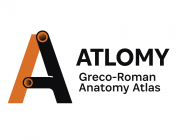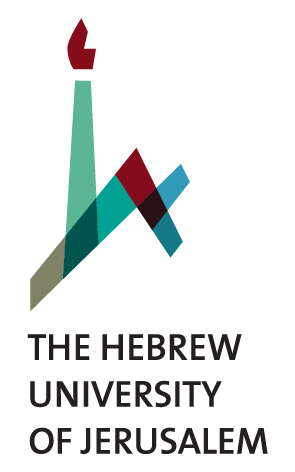Modelling
![]() Creating 3D models of the ancient anatomical ideas began as a means to communicate our interpretation of the texts in an accessible
Creating 3D models of the ancient anatomical ideas began as a means to communicate our interpretation of the texts in an accessible and lucid manner. One which helps other researchers and students to better understand and engage with the ancient texts and the complex anatomical ideas they describe. But very quickly we realised that the process of designing and creating these models is not only a means of publication but also a further stage in the interpretation and analysis of the text. In order to formulate instructions for the modellers the classicists had to return to the text and resolve a question or ambiguity that we had originally not even identified; often this required further consultation with the anatomy experts. 3D visualisations required decisions on many more details than if we were simply translating or describing the text in words. For example, details concerning proportions or exact points of attachment between parts.
and lucid manner. One which helps other researchers and students to better understand and engage with the ancient texts and the complex anatomical ideas they describe. But very quickly we realised that the process of designing and creating these models is not only a means of publication but also a further stage in the interpretation and analysis of the text. In order to formulate instructions for the modellers the classicists had to return to the text and resolve a question or ambiguity that we had originally not even identified; often this required further consultation with the anatomy experts. 3D visualisations required decisions on many more details than if we were simply translating or describing the text in words. For example, details concerning proportions or exact points of attachment between parts.
This meant, too, that some stages of the actual modelling require closer collaboration between the classicists and modellers. While the 3D modeller is creating or modifying the model in the modelling software, the classicist provides live guidance and corrections, often revisiting the text in the process.
 You can see the results of this work in our Digital Atlas, where you can view the model from different angles and explore inner parts. You can learn about the names of the parts (in Greek and English) and also read a detailed essay explaining the content of the model, the textual and observational sources as well as the interpretive decisions informing it.
You can see the results of this work in our Digital Atlas, where you can view the model from different angles and explore inner parts. You can learn about the names of the parts (in Greek and English) and also read a detailed essay explaining the content of the model, the textual and observational sources as well as the interpretive decisions informing it.
We are happy to receive feedback on the interpretation or appearance.
Lexical Database
![]() An important part of our work is the lexical interpretation of the anatomical terminology. Our Atlas includes ca. 700 lexical entries (lemmata) of Greek and Arabic words related to anatomy (body parts, anatomical topography, dissection actions and more). Each entry lists the translation and a list of textual references, showing also the full sentence in which the word appears. It will also connect you to any 3D models in which the term appears. For ca. 50 Greek lemmata we have written a definition and description focusing on its meaning and use in anatomical and medical contexts. For some of these we have also written longer essays on the history of the term and its meaning in different medical and philosophical authors. We are working on further essays and descriptions.
An important part of our work is the lexical interpretation of the anatomical terminology. Our Atlas includes ca. 700 lexical entries (lemmata) of Greek and Arabic words related to anatomy (body parts, anatomical topography, dissection actions and more). Each entry lists the translation and a list of textual references, showing also the full sentence in which the word appears. It will also connect you to any 3D models in which the term appears. For ca. 50 Greek lemmata we have written a definition and description focusing on its meaning and use in anatomical and medical contexts. For some of these we have also written longer essays on the history of the term and its meaning in different medical and philosophical authors. We are working on further essays and descriptions.
We have automated stages in our collection, annotation and displaying of the data. Using the Coda platform, we are able to link texts, words and models in our database, and through dedicated scripts, the data is displayed in the Atlas in the interactive and friendly format. We are happy to share these concepts and scripts and help you adapt them to your requirements.
Machine Learning
![]() We have incorporated data science and machine learning into our workflow although this was not a part of the original plan for ATLOMY. We annotate our texts on INCEpTION to mark Parts of Speech (PoS), lemmata, and semantic categories (e.g. “boyd part”, “tool”, “topography”). By independent and collaborative machine-learning efforts, we have improved Lemmatization and developed a model for Named Entity Recognition (NER) to identify all references to body parts in ancient Greek texts. This work has revealed to us the potential of machine learning for the study of ancient medical texts as well as the vast novel research and development which is required to achieve these capabilities.
We have incorporated data science and machine learning into our workflow although this was not a part of the original plan for ATLOMY. We annotate our texts on INCEpTION to mark Parts of Speech (PoS), lemmata, and semantic categories (e.g. “boyd part”, “tool”, “topography”). By independent and collaborative machine-learning efforts, we have improved Lemmatization and developed a model for Named Entity Recognition (NER) to identify all references to body parts in ancient Greek texts. This work has revealed to us the potential of machine learning for the study of ancient medical texts as well as the vast novel research and development which is required to achieve these capabilities.


